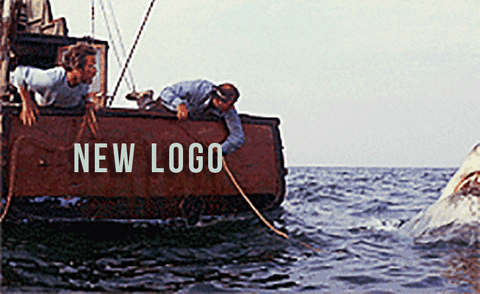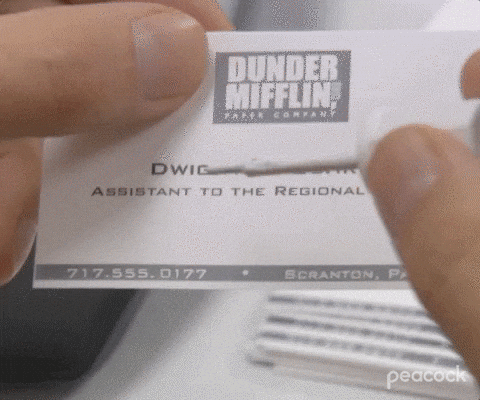Phone
01204 89 6440General Enquiries
hello@statuo.co.ukClient Enquiries
accounts@statuo.co.ukHello I’m Adam // General Manager
Drive quality traffic to your site
Talk to me todayHello I’m Faye // Marketing Director
Drive quality traffic to your site
Talk to me todayBranding is one of the most important factors of a business. Your company’s brand is what makes a memorable (or easily forgettable) impression on consumers and also lets your customers know what they can expect from you.
It can help you distinguish your company from competitors and show people why they should choose you over them.
However, many companies often undergo a rebrand at some point in their timeline, where they make changes to their brand identity and strategy.
In this guide, we’ll be taking a look at exactly what a rebrand is, why it is done and how you can rebrand your business.

A rebrand is the process of changing a company’s identity in order to better represent who they are as a business and how they wish to be perceived.
This can include changing their look including a new logo, colours, imagery, symbols and other visuals as well changing how consumers feel about them by updating their values, strategy and tone of voice.

There are a number of reasons why a company might want to rebrand.
[newsletter]
Perhaps there has been a change within the business and they feel their current branding no longer represents them well or their brand simply isn’t doing a good enough job of differentiating them in the marketplace.
Maybe they feel it is time for a change following the COVID-19 pandemic which has had a significant impact on everyone’s lives in the last two years.
Some other common reasons for a rebrand include:
- Expanding or entering new markets
- Correcting negative product/service impressions
- Launching a new product or line of business
- Updating the brand to attain larger or more sophisticated clients
- Mergers and acquisitions
Whatever the reason, rebranding can work wonders and help to totally transform businesses which may be otherwise struggling to modernise and differentiate themselves from their competition.
Even some of the most successful companies have undergone rebrands including Unilever, Apple, Nike and Google.

Sometimes businesses decide to rebrand without solid reasoning and actually end up either confusing their customers or becoming significantly less recognised than before.
Some reasons a company should avoid rebranding include:
Boredom is rarely a good enough reason on its own to rebrand. Sometimes, companies can benefit more by sticking with a consistent brand. For example, Coca-Cola is so easily recognisable thanks to its distinct brand that has remained pretty much the same for the last century.
It’s important to know that rebranding can be an expensive and time-consuming process.
Remember, deciding to change core elements of a business like it’s logo, colour scheme and/or name means the same big alterations will have to be made on the company website, social media accounts, brick-and-mortar locations, staff uniforms, merchandise and business cards.
If a company cannot afford to make these changes across their entire business then they should put the rebrand on hold for the time being or risk confusing customers.
Just because a new CEO wants to take a new direction and leave their mark doesn’t mean a company needs a rebrand unless it is actually accompanied by significant institutional changes that are noticeably different for customers.

If you have realised your company doesn’t actually need a rebrand but needs a little something to help bring it back to life and stay with the times, you might want to consider a brand refresh.
Unlike a full rebrand, a brand refresh simply improves upon your existing brand or makes slight alterations to reflect your current positioning. A brand refresh might include:
- Tweaking your current design or logo.
- Updating your slogan.
- Changing your colour pallet.
- Refreshing marketing materials.
- Using a new font
For example, let’s go back to Coca-Cola. Their branding has remained fairly consistent over the years with just slight tweaks to their logo, slogans and marketing over the years.
Below is a timeline of some of their most significant branding changes and refreshes.
As you can see, the logo has remained the same since 1891 with just slight changes or ‘refreshes’ made to suit different campaigns and products.
So you’ve decided it is time for your business to have a rebrand. What now?
Before you rebrand, it’s absolutely crucial for you to really understand your company’s mission, vision and values as this will dictate the entire rebranding process.
Think about what makes your company special and unique compared to others. Why does your business exist and what values do you prioritise? What is your company’s tone of voice? Does it match your identity and key messaging?
All of these come together to create the foundation that gives your new brand a solid base.
Before starting your rebrand, make sure to do your due diligence.
Do a full audit of your business; who are your audience and what do they want to see and hear from you?
Are you already meeting their needs or could you be doing more?
Take the time to research your industry and the market- are there any great trends you should be taking note of?
Are there any trends you should probably avoid? Make sure you’re doing things for a reason that fits in with your brand, not just because it’s trendy right now.
Look at what your competitors are doing right now. Are they doing things well or can you learn from their mistakes?
Find your similarities and differences and use these to show audiences why you’re the better choice.
Sometimes, renaming your business can be the first step towards the new brand.
Some of the most common reasons why companies may change their name are as follows:
Has your business significantly changed since you first named it? Are you offering a different service than you originally started with?
In this case, you’ll need to change your name to something that is more adaptable for the future, so if your business continues to grow and expand, your name will still work.
Sometimes, more than one company has the same name, or names so similar they look the same. When this happens, one company may receive a cease-and-desist letter asking them to stop using it.
More often than not, it isn’t worth getting involved in a scandal, so unless you have good reason to believe you had the name first and changing it would have serious effects on your business, your best bet is to think of something new.
If your business name is confusing or tricky to spell, customers may struggle to find or remember you. This also means you’re less likely to get referrals from happy customers after you’ve done a good job, meaning your word-of-mouth marketing will suffer.
Your name should be something simple, memorable and easy to spell.

If your business was a person, what 5 words would you use to describe them?
Honest? Friendly? Reliable? Quirky? Ethical? Funny? Extravagant? Fashionable? Vigilant?
Here are some other questions to help you identify your business’ personality:
- What is your business’ main purpose?
- How do customers benefit from your business?
- What are people’s current perceptions of your business?
- What kind of qualities do you want people to associate with your business?
- What’s the most important part of a customer's experience with your business?
Your answers to the questions above will help you to build your brand’s core which all of the following decisions should consider.

A well designed logo is essential in making your business easily identifiable and recognisable. Key things to keep in mind when coming up with a new logo are that it should embody your brand, be versatile and be timeless.
A common mistake many companies make when coming up with a logo is over complicating things. Some of the most iconic logos are the most basic such as Apple, Pepsi, McDonalds and Nike, so don’t feel pressured to create something extravagant.

Creating new brand guidelines is crucial in keeping your brand consistent whenever any member of your organisation wants to publish, present or promote content for your company.
The brand guidelines should be able to answer the following questions:
- What font does the company use for the logo, heading and body text?
- What is the brand’s colour palette?
- What TOV does the company use? For example, is it professional using industry jargon? Is it casual and friendly?
- When an image/graphic is required for a project, what tone and feel should it have?

Your company's website is often the first place prospective customers visit in order to find out more about your business. Ensuring the customer has a positive and easy user experience (UX) on your website is essential if you want to generate leads and convert.
Another key thing to bear in mind is whether your website conveys the trustworthiness of your company. In fact, 75% of consumers judge the credibility and trustworthiness of a business solely from their website, so make sure to avoid spammy pop-ups and suspicious looking links.
An effective website has great content, is updated regularly, matches the rest of the brand and is intuitive and easy to use.

Nowadays, many businesses make their first impressions via email.
That first welcome email could potentially be the first exchange between your company and the prospective customer and sets the tone for the conversation. That’s why it’s incredibly important for you to ensure your email design and content game is spot on with consistent branding and a clear message/call to action (CTA).

A business card can act as a tangible reminder of your business, providing prospective customers with a much more effective way to retain your company name and contact details than their memory alone. Great business cards should match your company’s new brand guidelines, using the same font, colour theme and logo.
Packaging doesn’t just have to be a boring plastic bag or cardboard box- in fact, for some brands, the packaging is part of the entire experience. For example, high end brands like Tiffany have iconic packaging with their blue box and white ribbon.
It's not just luxury brands either- the McDonald’s Happy Meal boxes are instantly recognisable with the golden arch handles matching the company logo. The black and white Asos delivery bag is so memorable that people associate that print solely with their packaging.
Influencer Molly-Mae Hague’s sofa cushions caused a stir last year when fans pointed out her cushions looked like ASOS delivery bags.

Keep in mind that a rebrand is a long and complex process.
Without a thorough strategy and well-managed plans, a rebrand can quickly become disorganised and end up impacting your market share and business negatively. This is why it’s so important to have detailed plans in place and specific deadlines that you stick to.
[newsletter]

Once you’ve come to the end of your rebrand process and you’re happy with the new look and feel of your company, it’s time to launch it. This can be a great opportunity for press releases, so make sure your marketing team has copy in place to send out to different journalists and publications relevant to your industry to announce your rebrand.
It’s also a good idea to let your existing customers know that some things have changed and why you have decided to rebrand. This can be done via a blog articleand/or social media and will help to minimise any confusion.
If the above seems too complicated for your business to pull off on its own, why not get in touch with our team of experts who can help you with every step of the process. If you’re in need of a rebrand and you’re not sure where to start, just give the team here at Statuo a call on 01204 826440 or send us an enquiry form.

